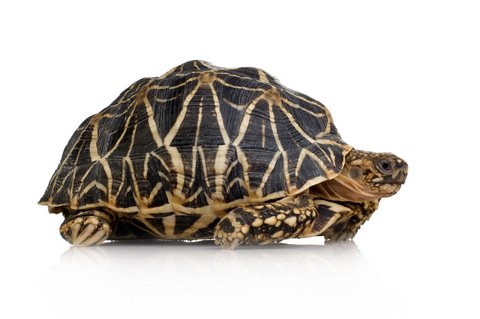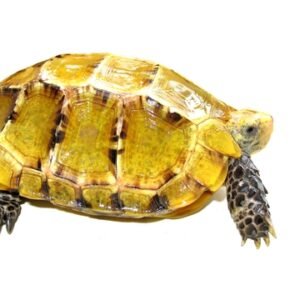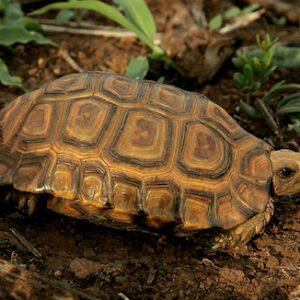Understanding Star Tortoises: Traits and Natural Habitat
The star tortoise, scientifically known as Geochelone elegans, is renowned for its captivating appearance and unique characteristics. One of the most notable features of the star tortoise is the distinctive star pattern on its domed shell, which consists of radiating yellow and black lines. This intricate design not only serves aesthetic purposes but also plays a role in camouflage within their natural habitat. Typically, an adult star tortoise can grow between 10 to 16 inches in length and may live for over 100 years if cared for properly, making them a long-term commitment for pet owners.
Originating from the dry regions of India, Sri Lanka, and the surrounding areas, star tortoises naturally inhabit scrub forests and grasslands. These environments present a unique combination of terrestrial and climatic conditions that are vital for their well-being. The star tortoise favors warm, sunny days and cooler nights, which helps them maintain their body temperature. These reptiles thrive in environments where temperatures range between 70°F to 90°F. As such, it is crucial for potential pet owners to replicate these conditions in captivity adequately. A basking spot with appropriate lighting to mimic sunlight, as well as shaded areas for cooling off, is essential for their health.
In captivity, maintaining ideal humidity and providing a varied diet that includes leafy greens and occasional fruits is equally important. Understanding the star tortoise’s natural habitat and dietary preferences is vital to creating a thriving environment in your home. Proper care entails not just physical habitats but also mimicking the natural lifestyle of the star tortoise, fostering their well-being and happiness. When prospective owners prioritize these factors, they enhance the living conditions for their pet star tortoises, ensuring a long and healthy life together.
Essential Care Tips for Keeping Your Star Tortoise Healthy
Maintaining the health of a star tortoise necessitates attention to several care requirements, including dietary needs, habitat setup, and health considerations. Creating an optimal living environment is essential for the well-being of this fascinating species. A spacious enclosure mimicking their natural habitat should be established, preferably with a substrate of coconut coir or orchid bark to retain moisture while providing adequate drainage.
Temperature control plays a crucial role in their health. Star tortoises require a basking area maintained at 90-95°F (32-35°C) and a cooler zone of around 70-80°F (21-27°C). Using a reliable heat lamp and thermometer can help achieve this temperature gradient. Additionally, humidity levels should be regulated; ideally, around 50-70% humidity is beneficial, which can be accomplished with a care regimen involving regular misting and the inclusion of water bowls in the enclosure.
Feeding practices for star tortoises should prioritize a diet rich in fiber and low in protein. Their diet predominantly consists of leafy greens, such as dandelions and collard greens, as well as some fruits. It is crucial to avoid high-protein foods like animal products and commercial tortoise foods that contain meat byproducts. Supplementing their diet with calcium and vitamin D3 is also important to prevent metabolic bone disease, a common health issue among star tortoises.
Regular monitoring of your star tortoise’s health is vital to ensure its longevity. Watch for signs of respiratory infections or shell issues, as these problems can escalate quickly. Routine veterinary check-ups should be scheduled to assess their overall health and receive necessary vaccinations or treatments. By addressing these essential care requirements, pet owners can provide their star tortoise with a comfortable, nurturing home that promotes a long and healthy life.





